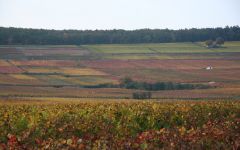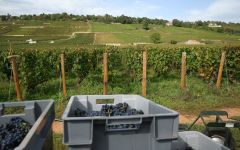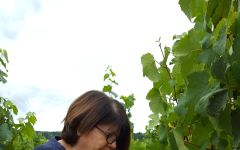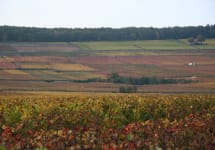Nicolas Potel Beaujolais-Villages 2020



Product Details
Your Rating
Somm Note
Winemaker Notes
Deep, garnet red. Delicate aromas of crushed fruits: strawberry, blackcurrant, cherry. Earthy, leather and pepper notes nicely accompany the intense fruit. A beautiful vinosity with a velvety structure. Fruity flavors, silky tannins and nice acidity add a fresh touch to this easy-drinking wine.
Ideally served slightly chilled. Pairs well with lamb taking, grilled fish or meat kebabs, grilled scallops, fresh tofu, cured meats, light stews, pizza, barbecued chicken and pork.
Other Vintages
2017-
Wilfred
Wong







Today, it is in the selection, vinification, and aging of their finest wines that Maison Nicolas Potel winemaker Brigitte Putzu focuses all of her attention on. Her time working side by side with Nicolas Potel and her knowledge of Burgundy's exceptional terroirs and incredibly diverse vineyards, allows her to select, vinify, and bring her assurance of quality to a large array of appellations and varietal wines.
Maison Nicolas Potel has built its international reputation by making wines from the most beautiful vineyards of the Burgundy region. Their appellation Villages, Premiers Crus and Grand Crus are recommended all over the world due to their purity of style, their authentic appellations and native lands. They adhere to sustainable viticulture, sourcing some fruit from 35+ year old vineyards, grapes from biodynamic and organic vineyards when possible, and from long-time grower partners. Brigitte follows the bio-dynamic calendar and creates wines in their style, either on root days or on fruit days, in order to respect the best of their individuality. Traditional winemaking, with very little intervention during the winemaking process, fermentation with only natural yeasts, limited use of oak / partial malolactic fermentation. Simply stated, these are delicious, fruit-forward wines to enjoy!

Delightfully playful, but also capable of impressive gravitas, Gamay is responsible for juicy, berry-packed wines. From Beaujolais, Gamay generally has three classes: Beaujolais Nouveau, a decidedly young, fruit-driven wine, Beaujolais Villages and Cru Beaujolais. The Villages and Crus are highly ranked grape growing communes whose wines are capable of improving with age whereas Nouveau, released two months after harvest, is intended for immediate consumption. Somm Secret—The ten different Crus have their own distinct personalities—Fleurie is delicate and floral, Côte de Brouilly is concentrated and elegant and Morgon is structured and age-worthy.

The bucolic region often identified as the southern part of Burgundy, Beaujolais actually doesn’t have a whole lot in common with the rest of the region in terms of climate, soil types and grape varieties. Beaujolais achieves its own identity with variations on style of one grape, Gamay.
Gamay was actually grown throughout all of Burgundy until 1395 when the Duke of Burgundy banished it south, making room for Pinot Noir to inhabit all of the “superior” hillsides of Burgundy proper. This was good news for Gamay as it produces a much better wine in the granitic soils of Beaujolais, compared with the limestone escarpments of the Côte d’Or.
Four styles of Beaujolais wines exist. The simplest, and one that has regrettably given the region a subpar reputation, is Beaujolais Nouveau. This is the Beaujolais wine that is made using carbonic maceration (a quick fermentation that results in sweet aromas) and is released on the third Thursday of November in the same year as harvest. It's meant to drink young and is flirty, fruity and fun. The rest of Beaujolais is where the serious wines are found. Aside from the wines simply labelled, Beaujolais, there are the Beaujolais-Villages wines, which must come from the hilly northern part of the region, and offer reasonable values with some gems among them. The superior sections are the cru vineyards coming from ten distinct communes: St-Amour, Juliénas, Chénas, Moulin-à-Vent, Fleurie, Chiroubles, Morgon, Regnié, Brouilly, and Côte de Brouilly. Any cru Beajolais will have its commune name prominent on the label.
